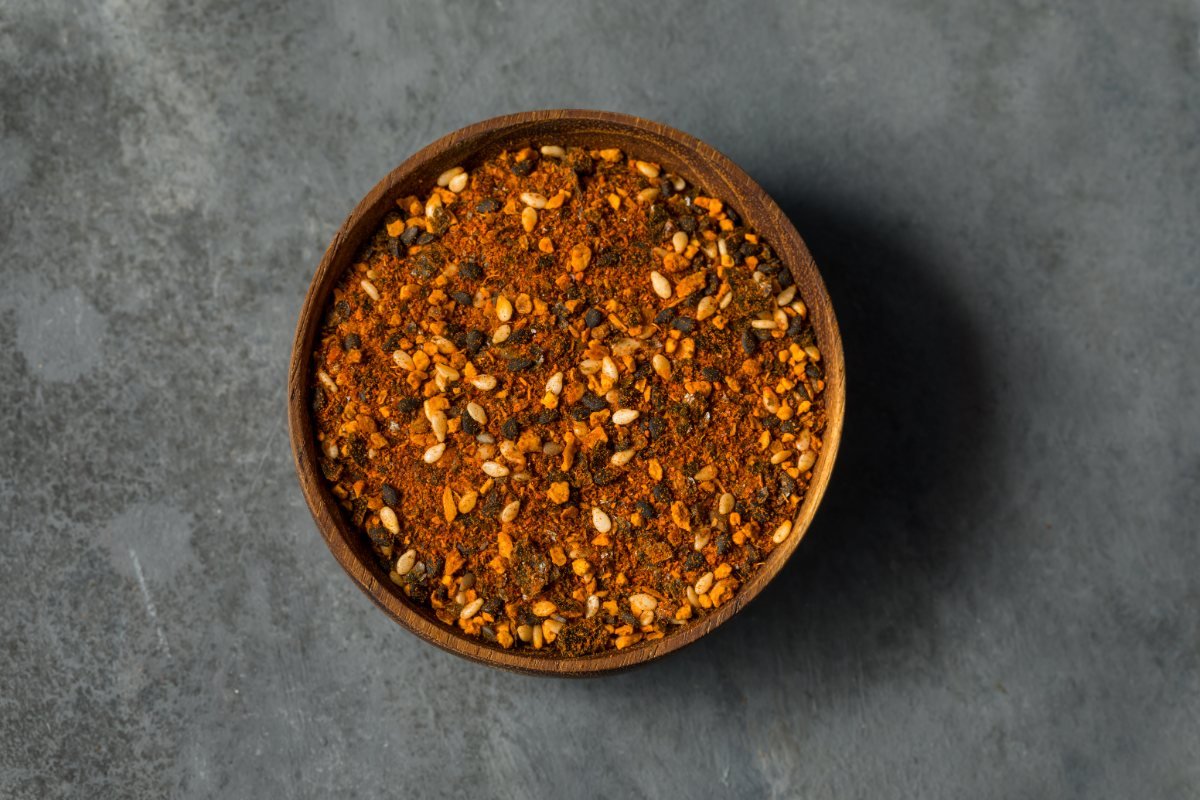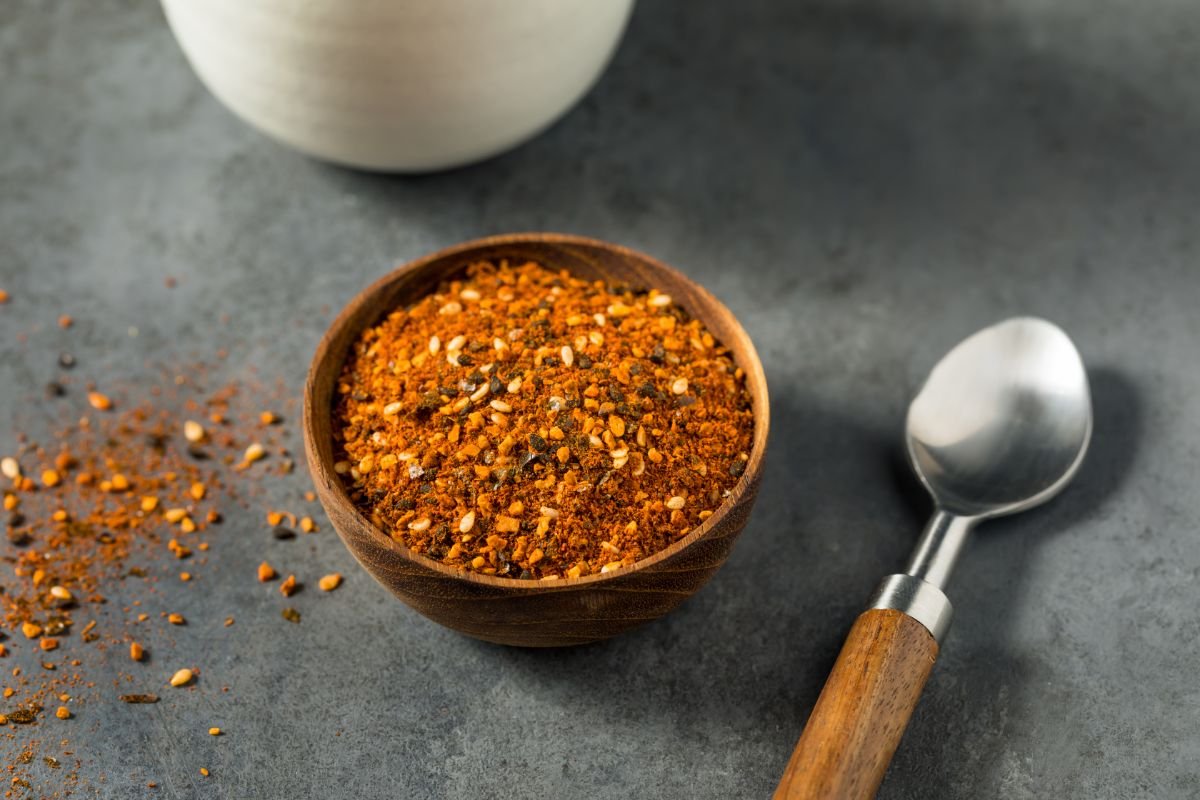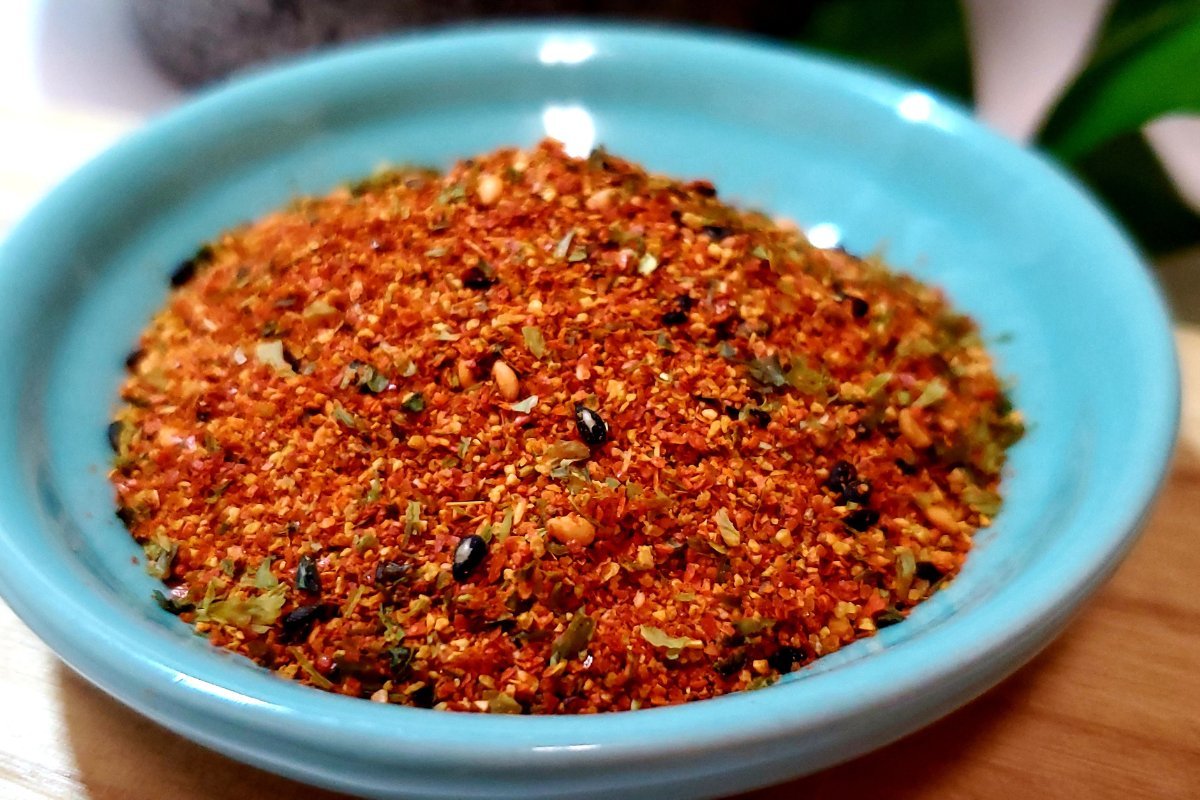Togarashi, a term that sparks intrigue and culinary curiosity, refers to a group of Japanese chili pepper blends known for their complex flavors and heat. Predominantly featured in Japanese cuisine, togarashi blends have been a staple for centuries, adding depth and spice to a variety of dishes. This introductory section will provide a glimpse into the world of togarashi, setting the stage for a deeper exploration of its rich history, types, and culinary uses.
The term “togarashi” itself is often associated with two main types: Shichimi togarashi, a seven-spice blend that offers a complex flavor profile beyond mere heat, and Ichimi togarashi, which is purely ground chili pepper. These blends not only add heat but also a nuanced flavor that elevates dishes from ordinary to extraordinary. The significance of togarashi in Japanese cuisine cannot be overstated, as it is a key ingredient in many traditional and modern recipes, reflecting the culinary craftsmanship and tradition of Japan.
In the following sections, we will dive deeper into the origins of togarashi, its evolution and role in Japanese cuisine, and how it has been embraced by food cultures around the globe. Whether you’re a seasoned chef or a curious food enthusiast, understanding togarashi will open up a new dimension of flavor in your culinary adventures.
The Rich History of Togarashi

Togarashi’s journey from a humble spice to a cornerstone of Japanese cuisine is a fascinating tale of culinary evolution. This section delves into its origins, historical significance, and the transformative path that led to its revered status today.
Origins and Early Uses
Togarashi, or Japanese chili pepper, first made its way to Japan through trade routes from the Americas in the 16th century. Initially used for its medicinal properties, togarashi quickly found its place in the culinary landscape of Japan. The warming and stimulating qualities of the chili pepper made it a popular ingredient among monks in temples to help preserve food and enhance their simple meals. Its use gradually spread, becoming a beloved spice for adding heat and depth to dishes.
Evolution into Shichimi Togarashi
The transformation of togarashi into the complex blend known as shichimi togarashi happened during the Edo period (1603–1868). This period marked a time of peace, cultural expansion, and culinary innovation. Shichimi togarashi, or “seven-flavor chili pepper,” emerged as a sophisticated blend designed to enrich the flavor profiles of a wide range of dishes. This blend typically includes ground red chili pepper, sansho (Japanese pepper), roasted orange peel, black sesame seeds, white sesame seeds, hemp seeds, ground ginger, and nori (seaweed). Each ingredient was chosen for its ability to contribute not just heat, but also aromatic and umami notes, creating a multifaceted spice blend that captivates the palate.
Cultural Significance and Modern-Day Popularity
Over the centuries, togarashi has ingrained itself in Japanese culture, symbolizing both the country’s rich culinary tradition and its openness to adopting and adapting foreign influences. Today, togarashi is celebrated not only in Japan but around the world, revered for its ability to transform ordinary ingredients into extraordinary dishes. Its rise in global popularity reflects a growing appreciation for Japanese cuisine’s emphasis on balance, flavor, and healthfulness, making togarashi a staple in kitchens worldwide.
The history of togarashi is a testament to the dynamic nature of culinary traditions, illustrating how a simple spice can evolve to become an integral part of a nation’s cultural and culinary heritage.
The Diverse World of Togarashi
Togarashi, with its rich history rooted in Japanese tradition, branches into a variety of blends, each offering unique flavors and culinary possibilities. This section delves into the main types of togarashi, highlighting their distinct characteristics and the innovative ways they enhance dishes.
Shichimi Togarashi: The Seven-Spice Symphony
Shichimi togarashi stands as a testament to the art of spice blending in Japanese cuisine. Crafted with a meticulous balance of seven ingredients, this blend harmoniously combines heat, citrus, and umami flavors. The traditional composition includes ground red chili pepper for heat, sansho pepper for a citrusy zing, roasted orange peel for a subtle sweetness, and a mix of sesame seeds, hemp seeds, ground ginger, and nori for depth and complexity. Chefs and home cooks alike sprinkle shichimi togarashi over noodles, soups, and grilled meats, elevating these dishes with a burst of flavor that tickles the palate. Its versatility and rich flavor profile make shichimi togarashi a beloved spice blend not only in Japan but across the globe, where it adds a Japanese twist to a variety of dishes.
Ichimi Togarashi: Pure Heat with a Purpose
In contrast to the complexity of shichimi, ichimi togarashi offers simplicity and singular focus with its one-ingredient wonder: pure ground red chili pepper. This spice delivers an unadulterated heat that is both intense and invigorating. Ideal for those who seek to add a straightforward spicy kick to their meals, ichimi togarashi finds its place in dishes where the chili’s pure flavor and heat can shine without the interference of other flavors. From adding a fiery touch to ramen and soups to seasoning meats and vegetables, ichimi togarashi caters to the purists of spice, proving that sometimes, simplicity is the ultimate sophistication.
Beyond the Basics: Exploring Other Variations
The world of togarashi does not stop at shichimi and ichimi. Creative blends and regional variations continue to emerge, each adding its unique twist to the togarashi lineage. Some of these blends introduce new ingredients like yuzu peel, adding a fragrant citrus note, or shiso leaves for a hint of minty freshness. These innovative takes on togarashi reflect the dynamic nature of Japanese cuisine and its capacity for adaptation and evolution. Whether used in traditional Japanese dishes or incorporated into international cuisines, these togarashi variants invite culinary enthusiasts to explore an expanded palette of flavors and sensations.
Culinary Uses of Togarashi
Togarashi, celebrated for its versatility and depth of flavor, infuses dishes with a distinctive blend of heat, tang, and umami. This section explores how togarashi, in its various forms, elevates Japanese cuisine and offers chefs worldwide a tool for culinary innovation.
Elevating Traditional Japanese Dishes
Togarashi finds its roots deeply embedded in the tradition of Japanese cooking, where it serves as more than just a seasoning; it’s an integral component that complements and enhances the natural flavors of ingredients. Shichimi togarashi, with its seven-spice blend, adds complexity to broths and soups, offering a layered tasting experience. A sprinkle over udon or soba noodles introduces a textural contrast and a flavor boost that is both unexpected and delightful. Ichimi togarashi, on the other hand, provides a singular, focused heat that invigorates dishes like miso soup and yakitori (grilled chicken skewers), allowing the chili’s clean spice to shine through. The adaptability of togarashi ensures that it enhances, rather than overpowers, the delicate balance of flavors characteristic of Japanese cuisine.
Innovating with Togarashi in Modern Cooking
Chefs around the world have embraced togarashi, incorporating it into an array of dishes far beyond its traditional uses. Its ability to add a nuanced spice makes it a favorite for seasoning modern fusion dishes, such as togarashi-spiced crispy chicken wings or togarashi-infused chocolate desserts, showcasing its versatility. Vegetarian and vegan dishes also benefit from togarashi’s depth, as it introduces warmth and complexity to plant-based recipes, elevating simple ingredients like roasted vegetables and tofu. The spice’s global appeal lies in its capacity to integrate seamlessly into various culinary contexts, introducing Japanese flavors to new audiences.
Cooking Tips for Maximizing Flavor with Togarashi
To fully harness the potential of togarashi, consider the following tips when cooking:
- Start with a light hand, as togarashi’s intensity can vary. Gradually add more to taste, allowing the blend’s complexity to develop without overwhelming the dish.
- Pair togarashi with ingredients that can stand up to or be enhanced by its bold flavors, such as fatty meats, creamy sauces, or rich chocolates.
- Experiment with adding togarashi at different stages of cooking. Sprinkling it on as a finishing spice preserves its aromatic qualities, while cooking it with the dish allows its flavors to meld and soften.
- For a personalized touch, explore making your own togarashi blend, adjusting the spice levels and ingredients to suit your palate.
Health Benefits and Nutritional Information of Togarashi

Togarashi not only transforms dishes with its vibrant flavors and heat but also offers a variety of health benefits, thanks to its rich composition of spices. This section explores the nutritional aspects and health benefits of incorporating togarashi into your diet.
Nutritional Profile of Togarashi Ingredients
The spices that make up togarashi blends, such as red chili peppers, sesame seeds, and seaweed, are packed with nutrients. Red chili peppers, the primary ingredient in both shichimi and ichimi togarashi, are rich in vitamins A and C, which support immune function and eye health. Sesame seeds add a dose of healthy fats, calcium, and magnesium, essential for bone health and energy metabolism. Seaweed, often found in shichimi togarashi, is a source of iodine, crucial for thyroid function. Together, these ingredients contribute not only complex flavors but also a nutritional boost to dishes.
Boosting Metabolism and Supporting Weight Loss
The capsaicin in red chili peppers, which gives togarashi its characteristic heat, has been shown to boost metabolism and increase fat burning, making it a helpful addition to weight loss diets. By enhancing thermogenesis, the process of heat production in the body, togarashi can contribute to a slight increase in calorie expenditure, supporting weight management efforts. Incorporating togarashi into meals adds flavor without adding significant calories, making it an excellent choice for those looking to spice up their diet while managing weight.
Antioxidant Properties and Anti-inflammatory Effects
Togarashi’s ingredients are rich in antioxidants, compounds that fight oxidative stress and may reduce the risk of chronic diseases. The spices within togarashi, particularly red chili peppers and sesame seeds, contain antioxidants like vitamin C, vitamin E, and selenium. These antioxidants help neutralize free radicals, protecting cells from damage. Additionally, the anti-inflammatory properties of capsaicin and sesamin (found in sesame seeds) can contribute to reduced inflammation in the body, potentially lowering the risk of inflammatory conditions such as arthritis and heart disease.
Promoting Digestive Health
The fiber in sesame seeds and seaweed, along with the digestive stimulant properties of ginger and chili pepper, can promote healthy digestion. Togarashi may help in maintaining a healthy gut flora, enhancing nutrient absorption, and preventing digestive issues, making it not only a flavorful addition to meals but also beneficial for digestive health.
Togarashi’s Influence on Global Cuisine
Togarashi, while deeply rooted in Japanese culinary traditions, has captivated chefs and food enthusiasts around the world, integrating into various cuisines with its unique blend of heat and flavor. This section explores how togarashi has transcended its traditional boundaries, marking its presence in kitchens far beyond Japan.
Elevating Fusion Dishes
Chefs in international kitchens are embracing togarashi, using it to create innovative fusion dishes that marry Japanese flavors with local culinary traditions. Togarashi has found its way into everything from tacos and pizzas to gourmet popcorn and chocolate desserts, showcasing its versatility. By adding a pinch of togarashi, chefs elevate the flavor profile of dishes, introducing a nuanced heat and a touch of Japanese sophistication. This creative incorporation of togarashi not only highlights the spice blend’s adaptability but also fosters a cross-cultural culinary dialogue, blending the boundaries between traditional and contemporary, local and global.
Popularity in Health and Wellness Cuisine
The global health and wellness trend has also embraced togarashi, valuing it for both its flavor and health benefits. In vegetarian and vegan dishes, togarashi adds depth and complexity, compensating for the absence of meat with its rich, umami-laden profile. Health-conscious cafes and restaurants sprinkle togarashi on avocado toasts, salads, and smoothie bowls, leveraging its metabolic-boosting properties. This spice blend has become a staple in the pantry of health-focused chefs, who appreciate its ability to enrich dishes with both flavor and nutritional benefits.
Home Cooking and DIY Blends
The global fascination with Japanese cuisine has encouraged home cooks to experiment with togarashi in their own kitchens. The internet abounds with DIY togarashi recipes, allowing individuals to tailor the blend to their taste preferences. From homemade ramen and stir-fries to innovative snacks and seasoning for grilled meats, togarashi is enhancing the flavor of home-cooked meals worldwide. This widespread adoption and adaptation of togarashi underscore its universal appeal and the growing interest in incorporating diverse, global flavors into everyday cooking.
Crafting Your Own Togarashi Blend at Home
Embracing the art of making your own togarashi blend not only connects you to a centuries-old Japanese tradition but also opens up a realm of culinary creativity. This section guides you through creating a personalized togarashi mix, encouraging experimentation and adaptation to suit your taste preferences.
Selecting Your Spices
The journey to your custom togarashi blend begins with selecting high-quality spices. For a traditional shichimi togarashi, you’ll need ground red chili pepper, dried orange peel, ground sansho (or Szechuan peppercorns for a similar effect), black and white sesame seeds, poppy seeds (or hemp seeds), ground ginger, and nori (seaweed) flakes. Source fresh, organic spices where possible, as this will significantly impact the flavor of your blend. Each ingredient brings its unique flavor and health benefits, creating a symphony of tastes that elevate any dish.
Blending Techniques
Blending your togarashi requires a delicate balance, aiming for a harmony of flavors. Start with the ground red chili pepper as your base, adjusting the quantity depending on your heat preference. Mix in equal parts of the remaining ingredients, tasting as you go to adjust the balance. For a more personalized touch, consider adding a pinch of yuzu peel for citrusy notes or a sprinkle of shiso leaf powder for an earthy, minty flavor. The key is to experiment until you find the perfect blend that suits your palate.
Usage and Storage Tips
Once you’ve perfected your togarashi blend, it’s ready to transform your dishes. Sprinkle it on soups, noodles, grilled meats, or vegetables to add a burst of flavor. Togarashi also makes a fantastic seasoning for popcorn or mixed nuts. Store your blend in an airtight container in a cool, dry place to maintain its freshness and potency. Homemade togarashi not only elevates your cooking but also serves as a thoughtful, flavorful gift for food-loving friends and family.
Conclusion
Throughout this exploration of togarashi, we’ve journeyed from its historical roots in Japanese cuisine to its modern embrace by global culinary traditions. Togarashi, with its rich blend of flavors and health benefits, proves to be more than just a spice—it’s a bridge between cultures, a catalyst for culinary innovation, and a testament to the artistry of flavor. Whether through traditional uses in Japanese dishes or creative applications in fusion cuisine, togarashi invites both chefs and home cooks to experiment with its vibrant heat and depth.
Crafting your own togarashi blend at home not only connects you to this rich tradition but also opens up a world of personalized flavors. As we’ve seen, the possibilities are as limitless as your imagination, offering a unique way to spice up your cooking repertoire.
For those inspired to incorporate togarashi into your own culinary creations, I invite you to explore a variety of recipes that showcase this versatile spice. Whether you’re looking to add a Japanese twist to your favorite dish or explore new flavor dimensions, visit recipeszap.com for a collection of recipes designed to ignite your passion for cooking with togarashi.
And if your curiosity about Japanese cuisine extends beyond togarashi, I encourage you to explore The World of Japanese Cooking for in-depth guides, recipes, and insights into Japan’s culinary heritage. Embrace the journey of taste, tradition, and innovation as you bring the essence of Japanese cooking into your home.

